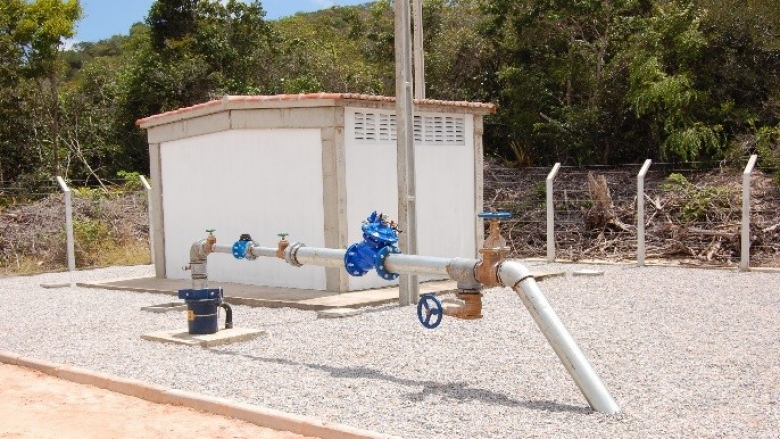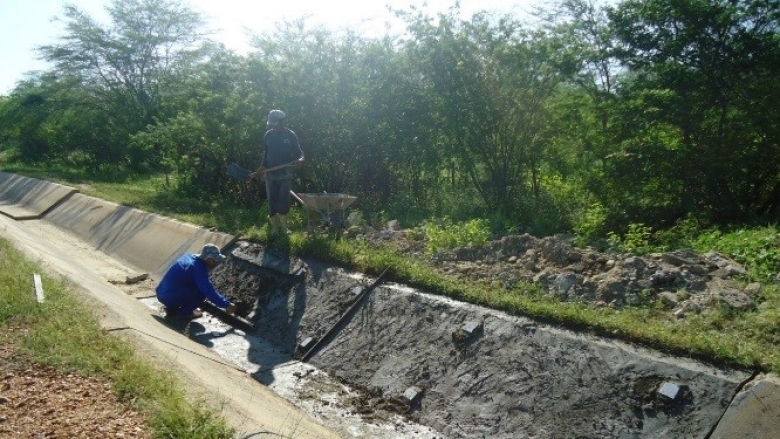Challenge
Brazil has twelve percent of the world’s total fresh water but it is extremely unevenly distributed. About 73 percent of the country’s water is concentrated in the Amazon River Basin, while the semiarid Northeast, where the State of Rio Grande do Norte is located, has only 3 percent of the country’s water resources, about 1,200 cubic meter per capita. The State’s economic growth depends on the preservation and more equal distribution of its scarce water resources.
At the time of appraisal, the Seridó region was experiencing serious cyclical droughts, chronic water shortages, and poor management of its limited resources, jeopardizing the livelihoods of its inhabitants.
At the State level, the water management structure was unable to cope with increased pressure due to growing demand and pollution of existing resources.
Specific challenges for the State included over-exploitation and pollution of groundwater reserves; aging infrastructure such as dams, irrigation, and water distribution systems; deficient operation and maintenance; poorly maintained hydrological information systems; and absence of basic water resources information to inform investment-related decisions.
Approach
In order to tackle these challenges, the Project provided funding and technical assistance to improve the State’s water resources management system and investment planning capacity in the water sector (instituting an Integrated Water Resources Management model) and to undertake direct infrastructure interventions to improve water supply.
The project design was well-aligned with the Government’s objectives for the sector. It adequately identified and addressed major constraints to sustainable development in the State: poor management of water and natural resources resulting in their inefficient use and risk of deterioration; and improved efficiency of water use while increasing water supply to poor and rural areas.
Results
The following primary results were achieved during the life of the Project, from 2007 to 2014:
- The construction of water supply systems to serve 33 small rural communities, which currently supply water to 3,700 beneficiaries.
- The rehabilitation and installation of 125 desalinization units serving small communities directly benefited 8,900 families.
- Water losses in the Monsenhor Expedito pipeline, which supplies water to 30 municipalities and 280 small communities in the interior of the state benefiting some 300,000 inhabitants, were reduced from 46 percent to 38 percent. The Project expanded and improved the coverage of this water supply system through expansion of the pipeline and drilling of 12 new wells for complementary water production.
- The pilot scheme in the Cruzeta irrigation perimeter showcased a number of practical examples on how to modernize irrigation systems and improve efficiency and sustainability, which could be replicated in similar small irrigated perimeters in the Northeast region. It allowed improved production, increased efficiency, increased resilience to extreme events, improved operation and maintenance, and diversified agriculture. The pilot scheme integrated structural and non-structural measures to drought management aiming at improving both the economic and environmental sustainability of local agriculture.
- The State Water Resources Policy Law was updated to incorporate the principles of integrated water resources management, focusing on water quality and quantity, groundwater management and improved water licensing criteria to strengthen the mechanisms for sustainable water allocation. Regulation of water resources was successfully strengthened via the establishment of revised legal and institutional frameworks.
- A fully operational water resources monitoring and information network was put in place and is used for improving the operation of reservoirs and water allocation due to the real time monitoring of water availability.
- Deepened e knowledge of the State’s most strategic aquifers, indicating their vulnerabilities and potential for securing water for development, signaling the possibilities of expansion of water supply systems, and providing indication of actions for rational use and conservation.

